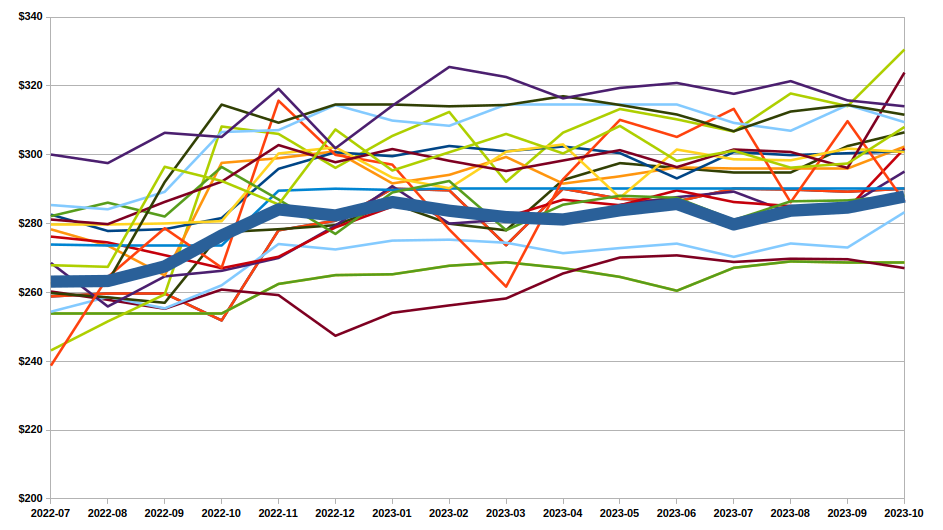Let's be clear from the start: it's not easy to answer the stated question, "How long does it take for insurance payments to catch up to vaccine cost increases?" Often, the answer is, "Never." Plenty of you have contracts whose vaccine payments haven't changed in years, defying common sense and reasonable business practice. It's also challenging to really determine how a fee schedule changes for a payor, even when you limit to a specific state (or part of a state), given how many fee schedules exist in the wild.
Nonetheless, I wanted to look for patterns. I zeroed in on Gardasil, as there was a fairly clear price increase in the middle of 2022 - per the CDC, the private sector price went from $254 to $269, a 6% increase (please let me if you witnessed something else).
In a perfect world, a practice might pay $254 for each life-saving-HPV-prevention-vaccine and would receive 25% more than the cost in order to break even (or about $318). As the price increases to $269, the associated payment would move to $336. Of course, very few practices get those payments for Gardasil, but what does happen when the price changes? Let's look.

What you see here is a sampling of the average payment for Gardasil for the biggest localized private payors among PCC's clients, a list that includes the BCBS programs in NJ, AL, VA, OH; Aetna in NJ; UHC in NJ and TX; CIGNA in VA and GA; etc. There are hundreds of other payors, but all the noise makes it difficult to follow.
Each of the skinny lines represents one of the payors above. The thick blue line represents the average of those payments. If you follow along, the average payment for Gardasil among these payors starts at $263 in July, 2022. By November, 2022, the payment average steadily increases to $284, an 8% increase where it stays steady for the next year (any fluctuation after that has to do with sample distribution). If you follow any of the thinner lines, you'll see that some of the payors follow - drive, perhaps - this pattern directly. Price goes up...four months later, the payments catch up.
Would I call a four month gap in payment vs. cost gospel? No. But it surely matches the subjective story line I hear often.
What do you see?
Comments
0 Comments